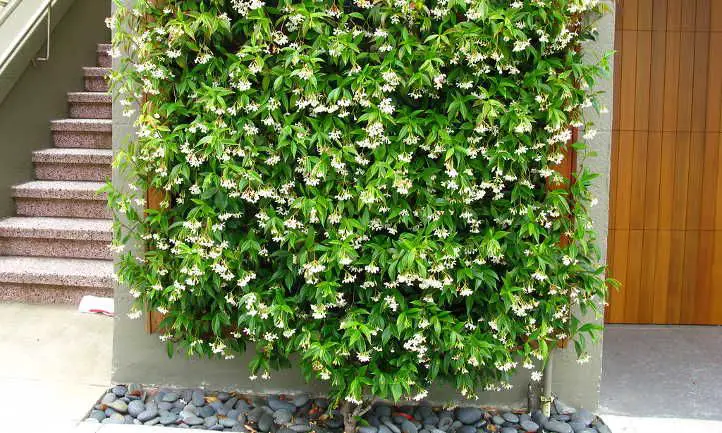What Does Autumn Woods Smell Like?
The Scent of Falling Leaves
The scent of falling leaves is one of the most characteristic smells of autumn in the woods. As leaves fall from the trees and blanket the forest floor, their earthy aroma permeates the air. The key source of this musky, pungent scent is the decay process. Chlorophyll, the pigment that gives leaves their green color and allows photosynthesis, begins to break down as autumn approaches. With the chlorophyll gone, other pigments such as carotenoids emerge, creating the vibrant yellow, orange, and red hues of fall foliage. But the chlorophyll doesn’t just disappear – it transforms into odorous compounds. The gases released from decaying leaves have a distinctly fungus-like, mulchy smell. They contain scents like geosmin, an organic compound with an intense earthy quality. As you walk through the autumn woods surrounded by fallen leaves, their musty fragrance evokes the cycle of decay that enriches the soil. It’s a reminder of nature’s endless transformation.
The Fragrance of Pine
As the bright greens of summer fade to muted olive, the pine trees of the forest remain a steadfast source of vivid color. Yet the pine trees offer more than visual brilliance. Their sharp, resinous scent pervades the autumn air, instantly conjuring up memories of crisp mornings and cozy evenings spent in the seclusion of evergreen woods.
The piney aroma arises from the sap, needles, and cones of conifers. As sunlight warms the trees, volatile organic compounds like pinenes, limonene, and carene evaporate from the pine resin, infusing the forest with an unmistakable perfume. Crushing a pine needle releases even more of the essential oils, intensifying the wholesome evergreen smell.
While pungent, the Pine fragrance is also clean and refreshing. Its menthol-like quality perks up the senses and invites deep breaths of the brisk woodland air. The balsamic notes evoke forests of yore when pine stretched unbroken over the land. Today, catching a waft of Pine still offers a sense of stability and resilience.
As autumn progresses, the scent of Pine persists as a counterpoint to the changing smells of the season. Even on damp, hazy days, that vital evergreen aroma rises from the needled floor of the woods. The pine trees continue reaching for the sun, emitting their steadfast perfume.
The Perfume of Autumn Rain
The first storms after a long dry summer bring the most evocative scents to the autumn woods. As the initial raindrops hit the dusty ground, they release a perfume of moist minerals and earth. The rain washes the air clean, leaving behind a crisp, ozonic aroma. Gentle breezes sweep through the forest, carrying the clean scent everywhere. It’s an invigorating smell that signifies the woods’ rebirth after the arid summer. Everything seems renewed and refreshed.
The rain also brings out the musty smell of old leaves that carpet the ground. As moisture rehydrates the decaying foliage, earthy gases get released into the air. This adds an undertone of decomposition to the mineral freshness. It’s the aroma of the cycle of death and rebirth continuing in the forest ecology. Few fragrances represent autumn’s seasonal transition as eloquently as the perfume of an autumn rainstorm.
The Aroma of Ripening Nuts
One of the most distinctive scents of autumn is the rich, earthy aroma of ripening nuts. As cooler weather arrives, oak, chestnut, hickory, walnut, hazelnut and beech trees begin dropping their nutritious bounty. Walking through the autumn woods, your nose may catch a whiff of the nutty perfume released as the nuts tumble to the forest floor.
The smell is strongest near oak trees, where acorns litter the ground. As their green hulls split open, they release an appealing, bittersweet and slightly woody fragrance. Sniff an acorn up close and you’ll detect a faint scent like a nutty roasted coffee. Chestnuts too have a marked odor, similar to a sweet potato with nuances of vanilla.
The smell of dropping nuts peaks in autumn, but lingers into winter as squirrels and chipmunks dig up their hidden stores. This warming, appetizing aroma is an integral part of the season’s tapestry of scents and signals the woods are fruited and ready for winter.
The Smell of Mushrooms
As summer’s lush greenery starts to wither and fade, the damp, earthy aroma of mushrooms and other fungal growth emerges in the autumn woods. Tiny parasols and puffballs push up through the leaf litter and mulch, releasing an unmistakable musty smell. The rich scent of decay permeates the understory as fungal mycelia break down the organic matter of the forest floor. Porcini, chanterelles, morels, and honey mushrooms feast on the elements of past seasons’ bounty. Their primordial odor evokes the cycle of nutrient release and absorption occurring in the cool, shady groves beneath the autumn canopy. The damp smell complements the visual delight of discovering patches of mushrooms dotting the autumn woods.
The Fragrance of Wildflowers
One of the most delightful scents of the autumn woods comes from the wildflowers that continue blooming even as the leaves start to fall. Asters, goldenrods, ironweeds, and other hardy flowers soak up the last warm days of the season and release their lingering floral perfume into the cool autumn air. Bright purple asters mingle their light sweet smell with the richer, earthier fragrance of goldenrod. Ironweed’s tiny blossoms give off a faintly vanilla-like scent. Even as the woodland floor becomes carpeted with fallen leaves, these wildflowers persist, providing one last breath of floral sweetness before winter descends. Their tenacious blooms are a poignant reminder of summer’s glory amidst autumn’s decay. Walking through the autumn woods, you’re likely to catch wafts of these wildflowers on the breeze, adding a touch of lingering life and loveliness to nature’s seasonal transition.
The Scent of Wildlife
The cool autumn air carries the musky scent of animals who call the forest home. As leaves fall and nuts ripen, wildlife becomes more active, searching for food to store up for the coming winter months. The damp morning air is tinged with the earthy aroma of deer, whose coats thicken and scent glands activate as mating season approaches. The tantalizing smell of fox wafts through the underbrush as these clever creatures patrol their territories. The chattering of squirrels high up in the trees accompanies the smell of their soft fur and frantic activity. Birds flutter by, their feathers releasing a light musty odor from days spent hiding in the nooks of trees or foraging on the woodland floor. The rich, natural smell of wildlife permeates the autumn woods, signaling the changes happening all around as animals prepare for the approaching cold of winter.
The Aroma of Damp Earth
The autumn woods exude a rich, damp, earthy smell after a rainfall or morning dew. As moisture permeates the soil and leaf litter, it releases an intoxicating loamy aroma. Decaying leaves, logs, and other plant matter intermingle with the wet soil, producing the characteristic scent of organic matter breaking down. Taking a deep breath in the woods after a wet spell, your nose fills with the primordial smell of fertile earth. It speaks to the constant cycle of decay and rebirth occurring below the forest floor. This damp aroma forms an inextricable link to the origins of life.
The Smoke of Wood Fires
As the autumn air turns crisp, one scent that fills the nostrils is the tangy, woodsy aroma of fireplaces and campfires. The smell of burning wood from a fireplace chimney wafts through the neighborhood on cool evenings. Plumes of smoke rise from backyard fire pits where families gather to roast marshmallows. The smoky scent of bonfires mingles with laughter in the forests where friends connect over s’mores at night.
The nostalgic smell of burning oak, maple, or pine kindles memories of past autumns and simpler times. Sitting around a campfire, faces glowing in the flickering light, it’s easy to feel a connection to generations past. The sensory experience of wood smoke is a tradition handed down through the ages. There’s comfort in the familiar smell, a reminder of the cyclic nature of the seasons.
Inhaling the rich smoke from a wood fire, pungent and earthy, can make one feel more alive. Letting the scent permeate your clothes by the fireside creates a lingering sensory reminder to savor. The aroma of burning wood embodies the essence of autumn, inviting us to gather with loved ones and appreciate the fading embers of the year.
The Freshness of Autumn Air
The cool, crisp, clean scent of the autumn breeze wafting through the trees is one of the most refreshing and rejuvenating smells of the season. As the summer humidity and sultriness fade away, the autumn air becomes lighter, drier, and crisper. Each breezy gust brings with it the smell of renewal; a reminder that summer has ended and fall has begun.
On an autumn walk through the woods, the brisk air fills your lungs and awakens your senses. The breeze rustles the changing leaves above, releasing their earthy aromas. But underneath is the pure freshness of the autumn air itself. It’s a cool, inviting scent that makes you want to breathe deeply and enjoy the rejuvenating qualities of the new season.
The autumn air smells refreshingly clean, as if the earth has been cleansed by the passing summer storms. Dust and pollen have been swept away, leaving behind air scrubbed clean and ready for fall. It’s crisp and sharp, but not overly cold yet. It’s a dry air, dense with the tang of oncoming winter but still holding the last traces of summer’s warmth.
As autumn progresses, the fresh scent in the air will slowly give way to woodsmoke and earthiness. But for now, the autumn breeze smells bright and alive, full of promise and possibility. The freshness reminds us to savor the invigorating air as the forests transition into brilliant fall color.


